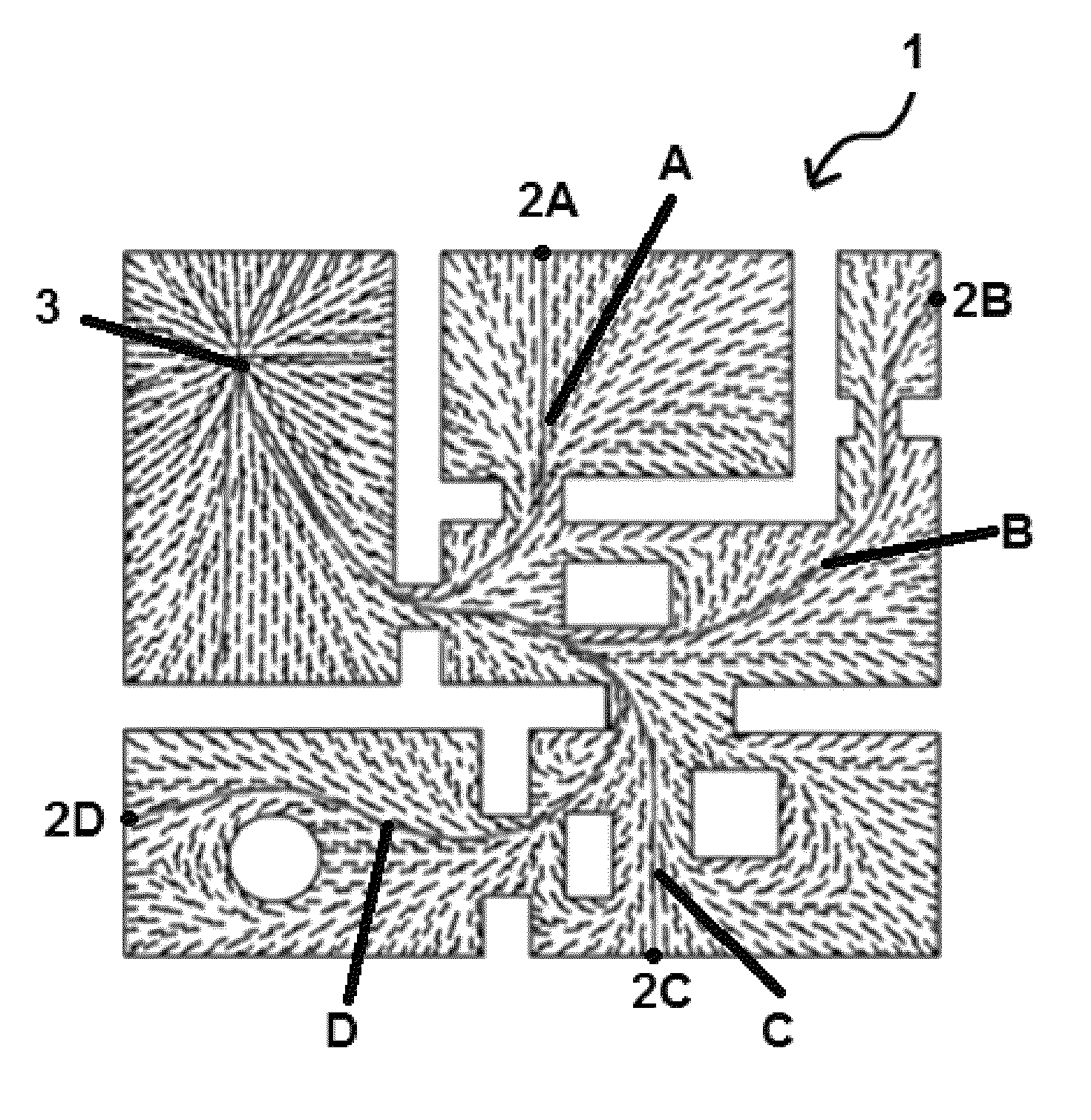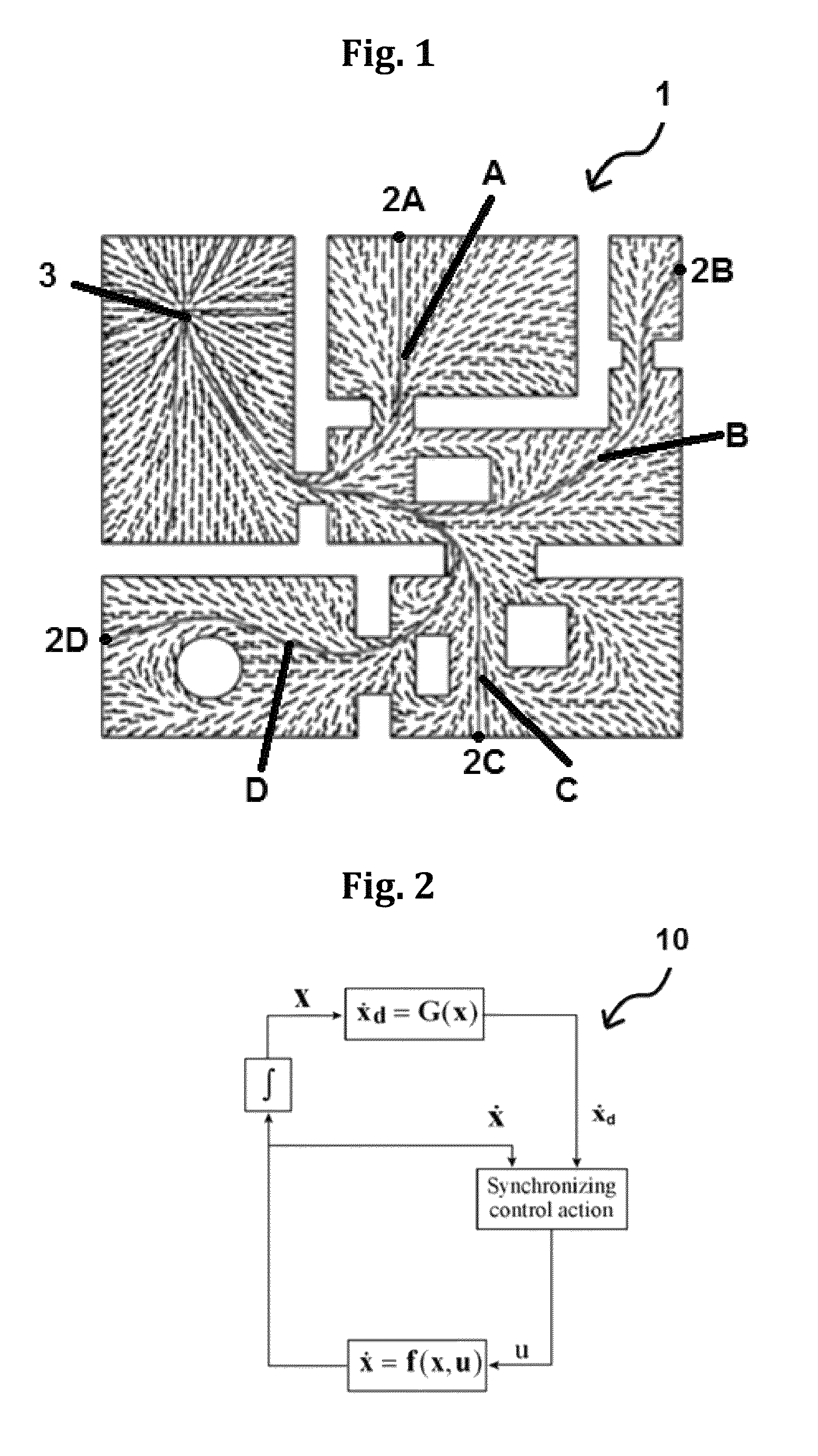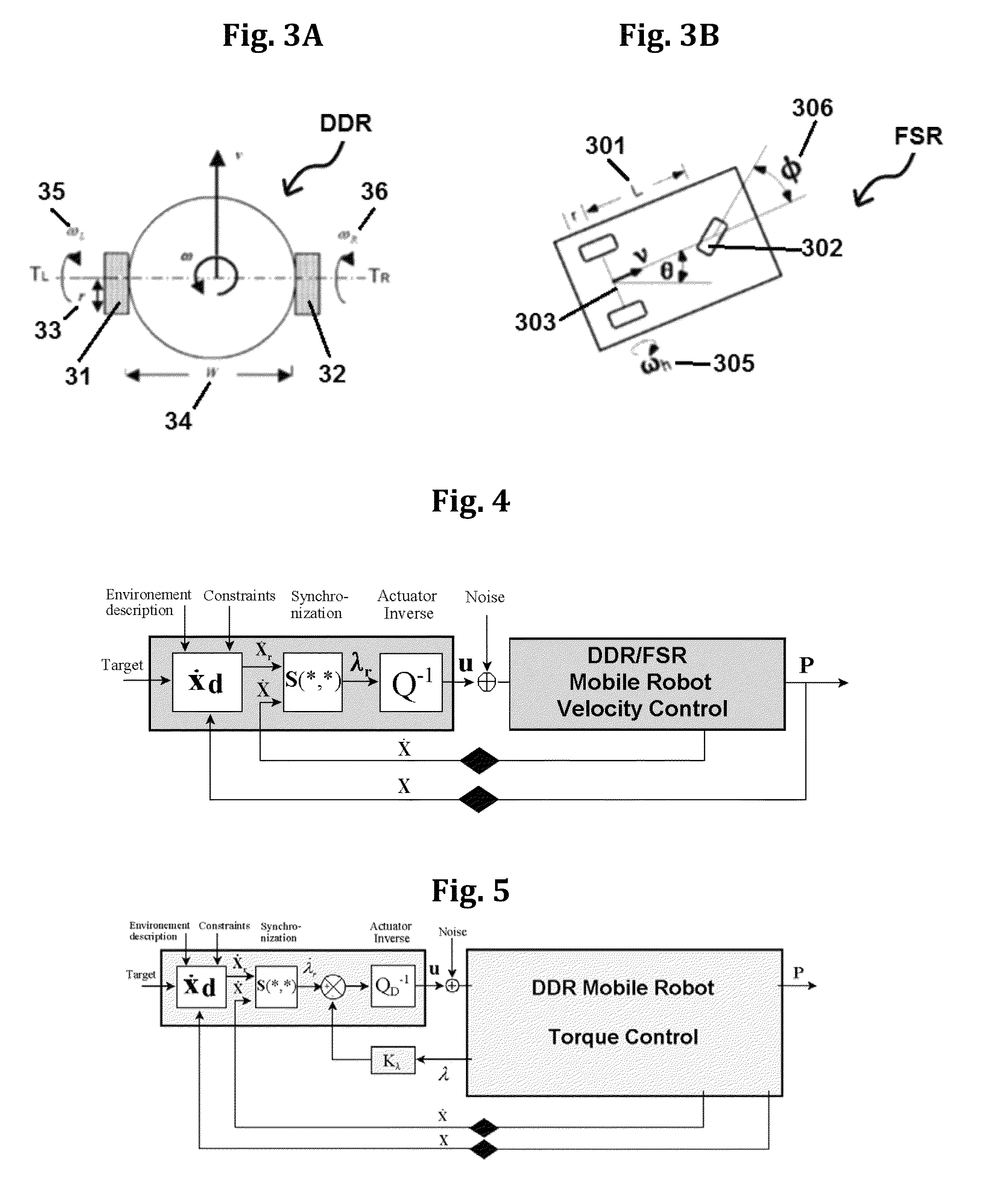Method of joint planning and control of a rigid, separable non-holonomic mobile robot using a harmonic potential field approach
a mobile robot and harmonic potential field technology, applied in the direction of electric programme control, program control, instruments, etc., can solve the problems of inability to adjust the joint planning and control of the mobile robot, the current actuation technique is generally sensitive to saturation, noise and uncertainties, and the most existing actuation technique is quite involved and difficult to tune, etc., to achieve the effect of reducing energy consumption, improving the speed of operation and high quality respons
- Summary
- Abstract
- Description
- Claims
- Application Information
AI Technical Summary
Benefits of technology
Problems solved by technology
Method used
Image
Examples
Embodiment Construction
[0054]Objects, advantages, and features of the exemplary method of controlling a position of a robot described herein will be apparent to one skilled in the art from a consideration of this specification, including the attached drawings.
[0055]According to one embodiment of the present disclosure a method of controlling a position of a robot includes controlling the robot using a velocity synchronizing signal. The velocity synchronizing signal may be applied to differential drive robots (DDR) or to front wheel steered robots (FSR). The method of controlling may comprise: transferring a plan to a controller including a processor and memory, storing the plan in the memory, the plan including a reference velocity field vector; transferring parameters of the robot to the memory of the controller, the parameters including kinematics of motion of the robot; calculating, in the processor of the controller, a synchronization signal, S, based on the parameters of the robot; calculating, in th...
PUM
 Login to View More
Login to View More Abstract
Description
Claims
Application Information
 Login to View More
Login to View More - R&D
- Intellectual Property
- Life Sciences
- Materials
- Tech Scout
- Unparalleled Data Quality
- Higher Quality Content
- 60% Fewer Hallucinations
Browse by: Latest US Patents, China's latest patents, Technical Efficacy Thesaurus, Application Domain, Technology Topic, Popular Technical Reports.
© 2025 PatSnap. All rights reserved.Legal|Privacy policy|Modern Slavery Act Transparency Statement|Sitemap|About US| Contact US: help@patsnap.com



